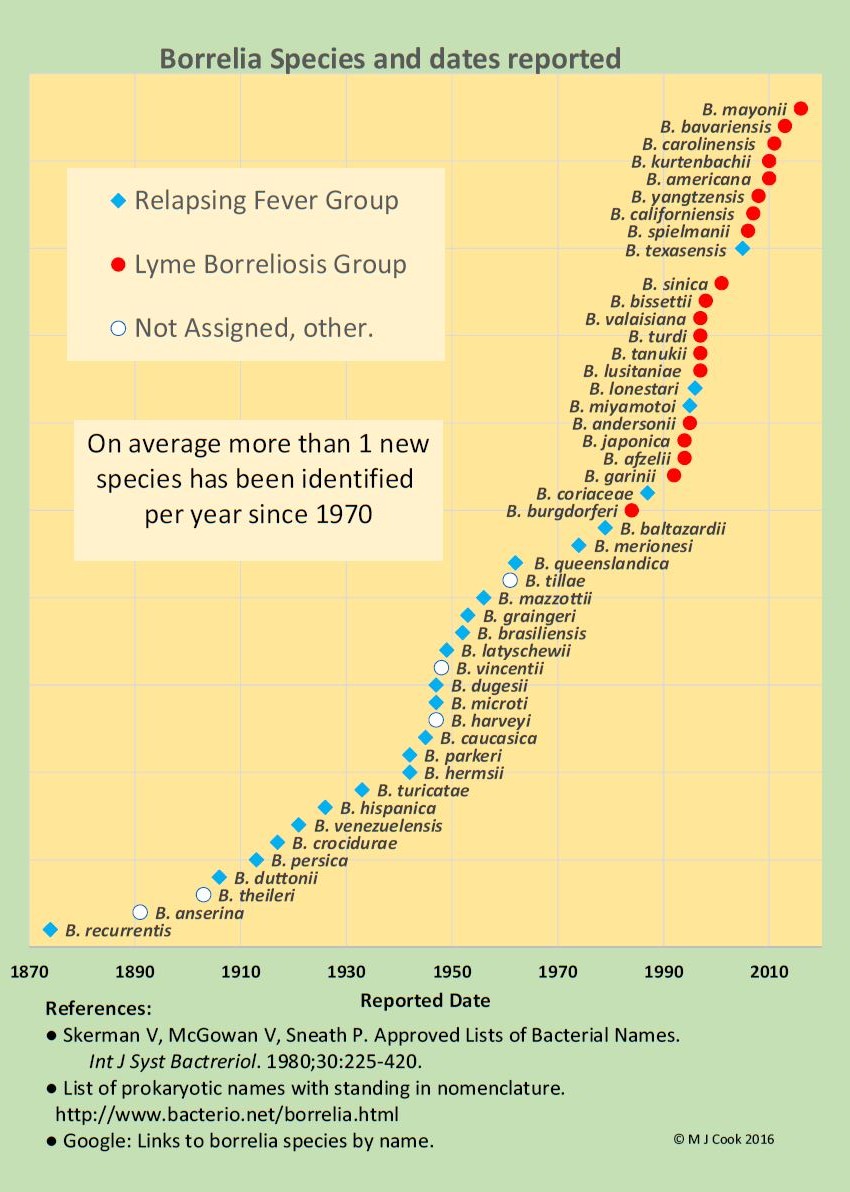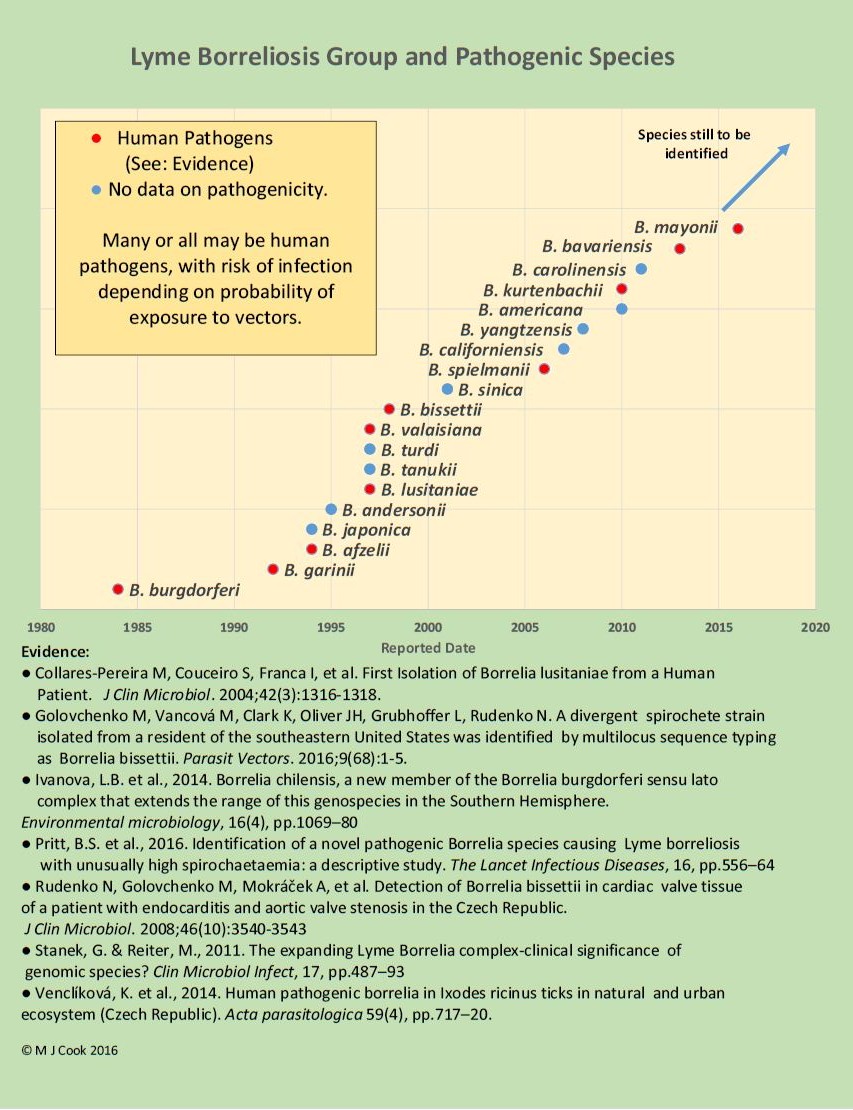Michael J Cook
Lyme disease was named by Alan Steere to cover an arthritic illness in juveniles in the townships of Lyme and Old Lyme in Connecticut. In 1984 Willy Burgdorfer determined the cause to be an infection with a species of borrelia spirochete subsequently named after him.
The U.S. Centers for Disease Control and Prevention has defined Lyme disease as being transmitted by Borrelia burgdorferi carried by Ixodes scapularis ticks. In Europe where the disease was first described by Afzelius in 1910, the definition includes other species of borrelia including B. afzelii and B. garinii, carried I. ricinus and I. persulcatus species of ticks.
In 1874 the first cases of Relapsing Fever were reported and the cause attributed to a borrelia species named B. recurrensis carried by the human louse.
Between 1874 and 1984 another 17 borrelia species were identified as causing Relapsing Fever. All were carried by soft bodied ticks of the genus Ornithodoros.
From 1984 until now 19 species of borrelia spirochetes have been assigned to the Lyme Borreliosis group, all are carried by hard bodied ticks. Based on disease symptoms and records of the presence of only one species in a patient, it is now demonstrated that more than B afzelii, B burgdorferi and B garinii are associated with Lyme disease and Lyme like illnesses. With evidence for 10 species definitively causing disease a more appropriate name is Lyme Borreliosis. The following 2 charts show the assigned date of discovery of 47 species borrelia, and the 19 species currently classed within the Lyme Borreliosis group including a species with the proposed name of B. mayonii announced in 2016.




